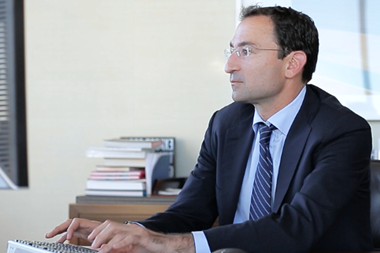After a tumultuous 2020, property’s leading figures share their hopes and expectations for 2021 as the year gets off to a rocky start with yet another lockdown.

Dan Drogman
Chief executive/founder, Smart Spaces
I expect to see a strong case being made for a return to the office once the lockdown ends. The reasons are well-versed: the office is where we collaborate and innovate, make connections, network and support the economy around us.
The role of smart building technology is to help facilitate a safe and secure return, as it provides practical solutions and, longer term, helps deliver healthier buildings.
To support our clients’ preparation, in addition to our community and wellbeing app, we’ve been implementing smart occupancy and air-quality sensors, contactless building entry, fever detection lanes with AI, location beacons and digital twins across 20m sq ft of office space.
Smart building tech enables owners and occupiers to flex traditional offices by understanding how people are using space in real-time. It is vital to understand that as we go into this new hybrid way of working.
As occupier demand for smart technology increases, there will be a ‘flight to quality’ and buildings distinguished by being smart will appeal the most.

Dan Hajjar
Managing principal, HOK London Studio
Should the second half of the year see life return to ‘normal’, we will have a clearer idea about the future of the office.
Many global businesses have already reduced the amount of office space they lease. With many buildings lying empty in the short term, it is reasonable to envisage a future where workplaces become flexible hubs for corporate functions and training, and not only for one company, but an ecosystem of complementary businesses with a big anchor tenant.
With government climate targets being implemented and occupier demands shifting, this future workplace will also need to be net-zero-carbon ready and embody principles of health and wellbeing.
Developers will rapidly diversify their tenant profile to attract businesses from fast-growing sectors, such as life sciences and medical technology, to urban locations.

Nicky Lovell
Head of outlets and brand development, Affinity
Over the past year, asset managers, along with others, have faced challenges they could have never predicted.
In our four Affinity Outlets across the country, we’ve needed to respond quickly. Yes, it has been a challenging market, but we have also welcomed early renewal conversations and seen brands returning to our locations, while others have opted to upsize.
In addition, we have secured new deals. The outlet retailing model, which had already been weathering the storm of online retail, has proven its resilience during the pandemic.
Outlets are often in well-located areas which complement town centres and benefit from bags of free parking in front of the outlet. They offer customers choice and value for money but also – importantly in the pandemic – a sense of safety and confidence in a spacious environment.
But it is the flexibility of the leasing model, which we are now seeing replicated in traditional retail destinations, that plays the really critical role in the outlets’ strength. In fact, we’ve seen as many independent brands considering an outlet for their first bricks-and-mortar presence as we have national multiple retailers looking for stock clearance.
Operators still look to outlets as an incredibly strong proposition to trial their products, to clear old stock, to access a high level of footfall and to test multi-channel retailing in strong locations.
Asset management in outlet retailing is not for the faint-hearted – a high degree of agility and adaptability is needed, and the churn of operators is real – but that is why the model is so compelling at this time.
Andrew Coombs
Chief executive, Sirius Real Estate
Sirius Real Estate has a £1bn market capitalisation and all its portfolio is in Germany. For 2021, I am optimistic about Germany’s prospects and Sirius’s as well.
Lockdown for us was better than for most UK-listed property companies, as we achieved near 100% rent collection and are now well-placed to benefit from Germany’s recovery.
Germany’s industrial production grew faster than expected in October, with factory output showing its sixth consecutive month of growth, propelled by exports that will only grow stronger.
I expect the German furlough scheme to taper off gradually between now and December 2021 as the economy picks up, meaning that just as after the crisis in 2007, unemployment will not be as widespread as it will be in the rest of Europe.
This is partly due to Germany’s powerhouse Mittelstand of medium-sized businesses, which are equal in importance to blue-chips and have a depth that it is the envy of the rest of Europe.
Many of the Mittelstand are Sirius occupiers, and as they are returning to growth they are changing their workplaces as well.
Across Europe, I expect to see companies leaving city centres and heading to low-rise properties on the edge of town in search of a healthy, sustainable workplace.
Continue to part 18 here
Forecast for 2021: looking ahead with hope
- 1
- 2
- 3
- 4
- 5
- 6
- 7
- 8
- 9
- 10
- 11
- 12
- 13
- 14
- 15
- 16
- 17
 Currently reading
Currently readingForecast for 2021: looking ahead with hope (part 17)
- 18
- 19
- 20
- 21
- 22
- 23
- 24
- 25
- 26
- 27
- 28
- 29
- 30
- 31
- 32
- 33
- 34
- 35
- 36
- 37
- 38
- 39
- 40
- 41
- 42









































































No comments yet